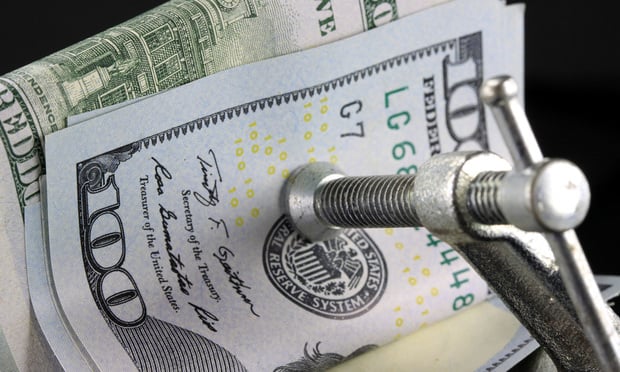CB Richard Ellis Jones Lang LaSalle
GlobeSt.com: Why you? What's your background?
Schinter: I've been in this field for the past 25 years and have a very strong background in various energy services-related industries, which includes greenhouse-gas emission calculations, energy management and general facilities operations. I'm a professional engineer with two degrees--thermo-mechanical and energy-conversion engineering as well as mechanical engineering, and I'm certified in energy management and sit on the LEED advisory board for air and atmosphere.
GlobeSt.com: What's your mandate?
Schinter: The mandate for the group is twofold: to promote environmental sustainability within our organization and then to all the clients we serve. We look to be the leader in environmental sustainability as it relates to real estate services on a global basis.
GlobeSt.com: So it's a two-fold approach of reaching out to your clientele and practicing what you preach. Which is the easier row to hoe?
Schinter: It's funny. The first challenge with clients is that they are often unsure what environmental sustainability means. They've heard the phrase, but they don't know what would make them an environmentally sustainable corporation. They don't know how to get started. For our internal initiative, we've done the research and have developed the process as well as the metrics. It makes it easier for us then to go out to the clients and walk them through the steps to get them to the point where they understand what it means, what can they do and how to get there.
GlobeSt.com: What percentage of your clientele is just window-shopping and what percentage is truly committed?
Schinter: I would argue that 100% are in that latter category. When they ask us to come in they want to embrace it on some level. Not all want to be leaders, but most want some aspect of it in their operation.
GlobeSt.com: I've heard that global owner/occupants are more committed to making it a part of their real estate strategy.
Schinter: Here in the US, we're driven predominantly by improvements in expenses. For most of the companies here there's no mandate for sustainability, but looking to improve operating expenses for those facilities provides an opportunity to target the energy-services component. You can create operating-expense reductions and at the same time contribute to more sustainable environment. Investors, of course, have to think long and hard about what benefits come from incremental spending in a property. We work hard with those investors to help them understand what they should be looking at either in terms of construction or modification.
GlobeSt.com: How do you view the premium for getting in the green door--so to speak?
Schinter: The LEED level you go after plays a role in that investment. If you're looking to simply get registered rather than getting one of the colors, if you will, the investment is quite small--it's about 3%. If you're going for platinum, it's something more in the 18% to 20% range.
GlobeSt.com: And what about the other shoe--the payback?
Schinter: It's in the four-to-10-year range for a platinum-level LEED certification.
GlobeSt.com: That's not terrible.
Schinter: No. The real issue is that resale comes in about three years. From that perspective, you're in the break-even range from an operating expense perspective, but you're recognizing that the tenants are really enjoying that building. So the question to an investor is if there is a price premium I can get when I go to resell this building because of the type of tenant I can attract. There's a large number of clients who will pay a premium to sit in an environmentally sustainable building.
GlobeSt.com: And what percentage of your clients embrace the costs?
Schinter: The tenants are driving the interest. And investors are seeing that those corporate tenants with a presence outside the US are embracing environmentally sustainable practices. So they're getting carried over to the US. They're willing to pay a premium because of that global commitment.
Just to show you how that is driving the market and what a major trend this is, the last time I looked at the EPA Climate Leaders site, there were 116 corporations that have voluntarily signed up to reduce greenhouse gas emissions. Those companies either have to make improvements in their operations to reduce emissions or they have to buy the benefit. There's also something on the order of 800 buildings with a LEED certification of some sort or other in the US and roughly 6,000 buildings that have applied to get certification.
GlobeSt.com: Getting back to JLL, have you established specific parameters?
Schinter: We're currently baselining our operation globally in terms of all related parameters. That includes such things as water and energy consumption, greenhouse gas emissions and the use of recyclable materials. Within the next four to six weeks we'll have a complete baseline and then we'll be establishing a firm goal. Right now, we're posing for the before picture.
Want to continue reading?
Become a Free ALM Digital Reader.
Once you are an ALM Digital Member, you’ll receive:
- Breaking commercial real estate news and analysis, on-site and via our newsletters and custom alerts
- Educational webcasts, white papers, and ebooks from industry thought leaders
- Critical coverage of the property casualty insurance and financial advisory markets on our other ALM sites, PropertyCasualty360 and ThinkAdvisor
Already have an account? Sign In Now
*May exclude premium content© 2024 ALM Global, LLC, All Rights Reserved. Request academic re-use from www.copyright.com. All other uses, submit a request to [email protected]. For more information visit Asset & Logo Licensing.








